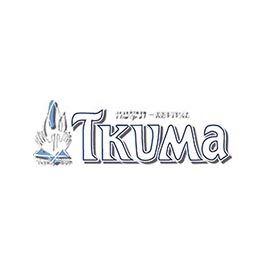Bank of Portraits / Muntian (Osadcha) Halyna and Ivanova Feofania

Muntian (Osadcha) Halyna and Ivanova Feofania
On the eve of the Nazi invasion of the USSR, Halyna Osadcha and Nina Volkova were the pupils of the elder forms at one of the schools in Kryvyi Rih, Dnipropetrovsk region. After the occupation of the city on August 14, 1941, the girls were shocked by the Nazis’ attitude towards the Jewish population. They witnessed the anti-Semitic actions of the Hitlerites and heard about that from their close friend Maria Bohatyriova, the Jew.
Maria worked as a cleaner at the German officer canteen. Halyna and Nina secretly visited her and tried to help in different ways. On October 17, 1941, they told Maria the news that the Jews were kicked out of their houses around the whole city and gathered in the synagogue. They persuaded her friend not to wait until she was taken, but to escape. Maria followed their advice. Everyone who came to the synagogue was exterminated.
The witnesses described that tragic event in the following way: “Near the shaft (probably, exploring one), the punishers set two machine-guns. Several Germans put on anti-gas masks, took the buckets and went to the ravine. There, they started to take children under 3 years old to the Germans with the buckets. They [the Germans] took the brush on the stick and poked the child’s face with it. In the buckets was strong poison, as children instantly got paralyzed and were thrown into the carriages. When the carriages were full, the children were brought to the shaft and thrown into it. Those, who did not give their children, were beaten into the face by the rifle stock, fell, and their children were taken. After the execution of the children, in half an hour, the Germans started to gather the first group of the doomed people, separating the crowd. However, as it turned out, not all the children were executed, as even after that the children were taken for the execution. Those taken by the police tried to keep those who could live a few more minutes. To separate the group for execution, the police beat the people with the iron sticks to break their arms. The first group of 30 persons was formed relatively long. Those who lost consciousness remained on the ground. This group was driven to the shaft under the hits by sticks and stocks, and then formed into a semi-circle. A few of those who did not obey were shot dead with pistols. Those who remained were shot with machine-gun a few moments later. The police and the Germans went for another group, while the different squad of the Germans and policemen drove the second group for shooting. After unsuccessful use of the machine-guns, the shooting was carried out with the help of pistols, or, more correctly, short-barrelled firearms. The executioners pushed people closer to the shaft, shot into the faces and pushed to the shaft. After the execution, the remaining corpses were grabbed by arms and legs and thrown into the shaft”.
Under the permission from the parents, the friends hid Maria in Nina’s house. Meanwhile, Nina and Halyna found a safer place for her in the city suburb, in the house of the elder woman Feofania Ivanova. She agreed to harbor the unfamiliar Jewish girl, willing to protest against the Nazi occupation policy in such a way.
Later, Ivanova loved Maria very much, cared for her health and helped her psychologically. Feofania’s married daughters knew about the secret mother’s lodger and supported her in all possible ways. Only a few persons knew about the location of Maria, as the girl hid all the time: in the garden, among the bushes, during the warm season, and in the attic in winter.
In the autumn of 1943, Feofania was arrested as the Communist Party member. She was sent to the concentration camp and did not come back anymore. Maria remained alone in the empty house. Until the liberation of the city in February 1944, Feofania’s junior daughter, Natalia, brought her food and told the news.
After the end of the war, Maria continued her friendship with Halyna and Nina, but did not manage to estimate the circumstances of Feofania’s death. In the postwar memories, she called her a “kind angel”.
On November 28, 2000, Halyna Muntian (Osadcha) and Feofania Ivanova were honored as the Righteous Among the Nations. On August 27, 2012, Halyna and the other 19 residents of the Dnipropetrovsk region received the medals “Righteous Among the Nations” from the Ambassador of Israel Anna Azari. The award ceremony took place in the “Golden Rose” choral synagogue in Dnipropetrovsk.

"Tkuma" Ukrainian Institute for Holocaust Studies
Dnipro
-
fingerprintArtefacts
-
theatersVideo
-
subjectLibrary

